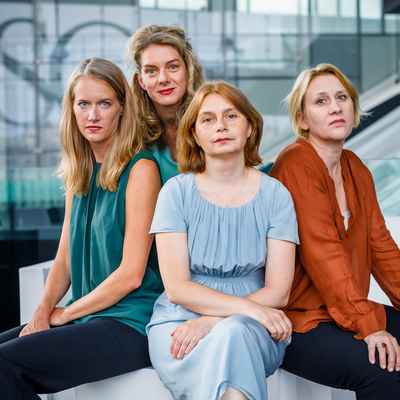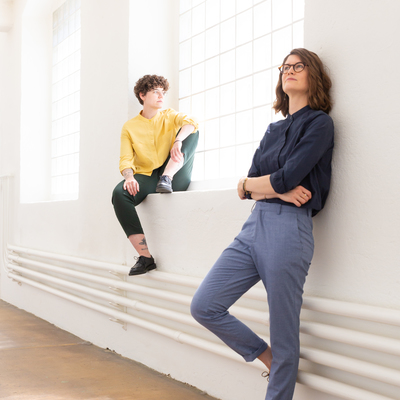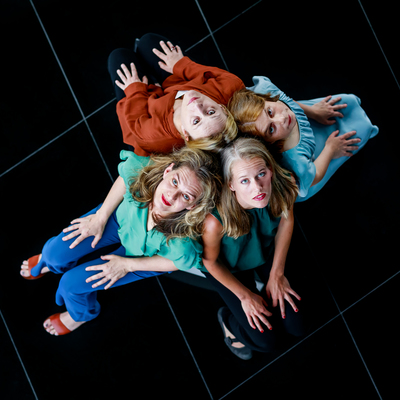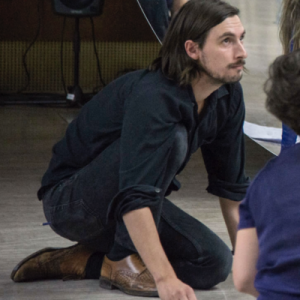Friederike Kenneweg
„Es fällt gerade schwer, sich auf die Arbeit zu konzentrieren“, sagt die Pianistin Tamriko Kordzaia, als ich sie Anfang März zu einem Zoom-Gespräch treffe. Wir sind beide erschüttert vom Krieg, der in der Ukraine begonnen hat. Aber für die Georgierin Kordzaia hat das Geschehen noch eine andere Bedeutung. „Ich bin hier natürlich auch gleich auf der Demo gewesen, und das hat gut getan, aber wenn danach alles wieder einfach so weiter geht, fühle ich mich hier auf einmal einsam…“
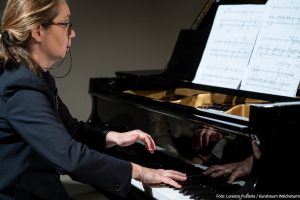
Brücken zwischen Georgien und der Schweiz
Und dabei ist Tamriko Kordzaia schon lange als eine Art musikalische Botschafterin zwischen der Schweiz und Georgien unterwegs. Seit 2005 leitet sie das Festival Close Encounters, das sich zur Aufgabe gemacht hat, zeitgenössische Musik beider Länder gemeinsam zur Aufführung zu bringen. Alle zwei Jahre findet das Festival in der Schweiz und in Georgien statt. Dabei geht es Tamriko Kordzaia zum einen darum, die Musik zeitgenössischer Komponist:innen beider Länder gemeinsam zu präsentieren und so Begegnungen zu schaffen. In Georgien geht es aber auch darum, zeitgenössische Musik in ländliche Regionen weit abseits des hauptstädtischen Zentrums zu bringen. „Das ermöglicht allen Beteiligten – Musiker:innen wie Zuhörenden – immer wieder einmalige Erfahrungen“, betont Kordzaia.
In diesem Jahr werden zu Werken von Peter Conradin Zumthor und Cathy van Eck junge georgische Komponist:innen mit neuen Stücken vorgestellt. Und mit Alexandre Kordzaia (*1994) ist auch der Sohn der Pianistin beim Close Encounters Festival vertreten. Er kann selbst als vermittelnder Grenzgänger zwischen der Schweiz und Georgien gelten, aber auch zwischen klassischer und elektronischer Musik. Denn er komponiert nicht nur Kammermusikwerke, sondern ist unter dem Namen KORDZ auch als Clubmusiker bekannt.
Engagiert für einen vergessenen Komponisten
Es sind allerdings nicht nur die jungen georgischen Komponist:innen, die Tamriko Kordzaia bekannter machen will. In Zusammenarbeit mit zwei weiteren georgischen Pianistinnen hat sie sich auch der Wiederentdeckung des in Vergessenheit geratenen Komponisten Mikheil Shugliashvili (1941-1996) gewidmet. Im Jahr 2013 brachten die drei Pianistinnen die Grand Chromatic Fantasy (Symphony) von Shugliashvili zur Aufführung und veröffentlichten die erste Aufnahme des beeindruckenden Werks für drei Klaviere auf CD.
Ausschnitt einer Aufführung des Stückes Grand Chromatic Fantasy (Symphony) von Mikheil Shugliashvili beim Musikfestival Bern 2020
Brücken bauen zwischen Formationen, Epochen und Genres
Tamriko Kordzaia ist als Pianistin in ganz unterschiedlichen musikalischen Formationen aktiv. Sie spielt Soloauftritte, konzertiert im Duo mit Dominik Blum von Steamboat Switzerland oder mit der Cellistin Karolina Öhman, und ist seit 2008 Mitglied des Mondrian Ensembles, das selbst alle möglichen Kombinationen, die ein Klavierquartett ermöglicht, mit seinen Programmen abdeckt.
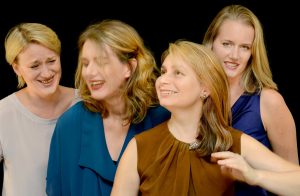
Und schon lange ist Tamriko Kordzaia nicht nur eine Grenzgängerin zwischen den Ländern und Formationen, sondern auch zwischen den Epochen. Zu Beginn ihrer Karriere in Georgien hatte sie sich zunächst mit ihren Interpretationen von Mozart und Haydn einen Namen gemacht. Als sie aber an der Zürcher Hochschule der Künste ihre Studien fortsetzte, begann ihre Auseinandersetzung mit zeitgenössischer Musik. Zum Beispiel mit den Werken des Schweizer Komponisten Christoph Delz (1950-1993), dessen sämtliche Klavierwerke Kordzaia im Jahr 2005 einspielte. Das Mondrian Ensemble, in dem Kordzaia Mitglied ist, hat es sich explizit zur Aufgabe gemacht, in seinen Programmen alte und neue Musik gemeinsam zu spielen und dadurch ungewöhnliche Zusammenhänge hörbar zu machen. Das Ensemble setzt in seinen Programmen auch Konzepte um, in denen Raum, Bühne oder Film eine Rolle spielen, und hat auch keine Berührungsängste bei der Zusammenarbeit mit Vertreter:innen des Jazz oder der Clubmusik.
Aufnahme des Mondrian Ensembles von Plod on von Martin Jaggi.
Über die lange Zeit, die Tamriko Kordzaia jetzt beim Mondrian Ensemble dabei ist, haben sich feste und regelmäßige Arbeitsbeziehungen ergeben, u.a. mit Komponisten wie Dieter Ammann, Felix Profos, Antoine Chessex, Martin Jaggi, Jannik Giger, Roland Moser und Thomas Wally.
sieben sonnengesichter
Ein besonderes Verhältnis hat Tamriko Kordzaia allerdings zur Musik von Klaus Lang, dessen Stücke schon in einige Programme des Mondrian Ensembles Eingang gefunden haben. Als die Corona-Pandemie das Konzertleben jäh zum Stillstand brachte, war es das Stück sieben sonnengesichter von Klaus Lang, mit dem sich Kordzaia, auf sich selbst zurückgeworfen, endlich einmal ausführlicher beschäftigen wollte. Das Ergebnis dieser Auseinandersetzung erschien 2021 auf CD.
Video von den CD-Aufnahmen der sieben sonnengesichter von Klaus Lang mit Tamriko Kordzaia am Klavier.
Arbeit mit der jungen Generation
Etwas, das Tamriko Kordzaia schon seit ihren Anfängen in der Schweiz begleitet, ist die Arbeit mit jungen Musiker:innen – eine Tätigkeit, die sie heutzutage richtig glücklich macht. An der Zürcher Hochschule der Künste gibt sie Klavierunterricht und hilft den Studierenden, den Weg zur eigenen Stimme bei der Interpretation nicht nur klassischer, sondern auch zeitgenössischer Werke zu finden. Und dort kommt sie auch mit jungen Komponist:innen in Kontakt, denen sie bei der Entwicklung ihrer Stücke beratend zur Seite steht. „Das ist so toll zu sehen, was diese jungen Leute für Ideen haben und wie sie weiter kommen. Das gibt mir immer Sinn und hilft mir weiter zu machen, auch wenn drumherum alles schwierig ist.“
Friederike Kenneweg
Erwähnte Veranstaltungen:
Festival Close Encounters:
Dienstag, 26.4.22 Kunstraum Walcheturm – Favourite Pieces
Donnerstag, 28.4.22 Stanser Musiktage – Georgische Musik mit dem Gori Frauenkammerchor
Freitag, 29.4.22 Feilenhauer Winterthur – Georgische Musik mit dem Gori Frauenkammerchor
Samstag, 30.4.22 GDS.FM Club Sender Zürich – Tbilisi Madness
10 PIECES TO DESTROY ANY PARTY:
Im nächsten Programm des Mondrian Ensembles kommt das gleichnamige Stück von Alexandre Kordzaia zur Uraufführung, eine „Oper ohne Libretto in 6 Sätzen“ für Klavierquartett und Elektronik. Das Stück erzählt die Geschichte von drei Prinzessinnen, die angesichts ihrer Hochzeit anfangen zu zweifeln und schließlich ihr eigenes Fest sabotieren. Dazu kombiniert: Werke von Mauricio Kagel, Cathy van Eck und Bernd Alois Zimmermann.
Dienstag, 3.5.22 Gare du Nord, Basel
Mittwoch, 4.5.22 Kunstraum Walcheturm, Zürich
Donnerstag, 5.5.22 Cinema Sil Plaz, Ilanz
Erwähnte CD-Einspielungen:
Klaus Lang / Tamriko Kordzaia, sieben sonnengesichter: CD domizil records 2021.
Mikheil Shugliashvili/Tamriko Kordzaia, Tamara Chitadze, Nutsa Kasradze, Grand Chromatic Fantasy (Symphony) For Three Pianos: CD, Edition Wandelweiser Records, 2016.
Christoph Delz: Sils „Reliquie“ – 3 Auszüge aus „Istanbul“, CD, guildmusic, 2005.
Klaus Lang, Mikheil Shugliashvili, KORDZ, Christoph Delz
neo-Profile:
Tamriko Kordzaia, Festival Close Encounters, Mondrian Ensemble, Karolina Öhman, Petra Ackermann, Alexandre Kordzaia, Cathy van Eck, Peter Conradin Zumthor, Jannik Giger, Dieter Ammann, Martin Jaggi, Roland Moser, Felix Profos, Antoine Chessex, Zürcher Hochschule der Künste, Musikfestival Bern


